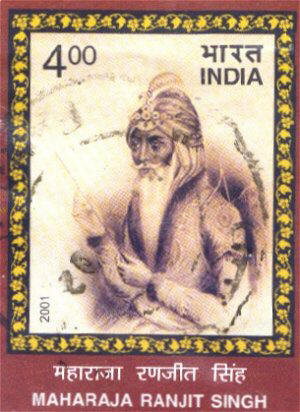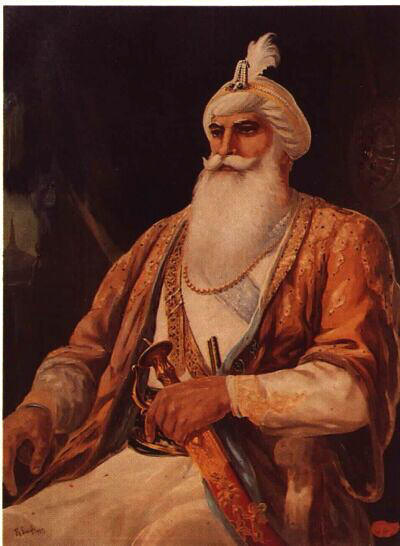The 12 Misls of Ranjit Singh’s Era
Misl is a word that means
“alike” and is akin to a fighting clan.
Maharaja Ranjit Singh’s ability to get the 12 misls to cooperate was a
critical factor in the ascendancy of his becoming the ruler of Northwest India.
To westerners, the Sikh Misls were akin to the Scottish clans. Every individual voluntarily gave of his loyalty to his Misldar (clan commander) and could depart at any time. The clans minded their own business in their territories, and were independent entities, but when necessity required, they came together under the appointed leader of all misls, to fight as a single army.

http://www.sikhspectrum.com/022003/feb5.htm
An Indian Posts & Telegraphs stamp issued in 2001 to honor the Maharaja
The Sikhs are important in Indian history because they almost broke the back of British power in India, in an increasingly ferocious series of battles. Chillianwallah is considered the most grievous defeat ever suffered by the British cavalry, and the British are generous enough to say so, and to tell how the Sikhs almost stopped British expansion. So severe were British losses, that had the Sikhs been able to regroup and resume the offensive, they would have pushed the British back to Delhi, at which point the scores of other defeated kings in the East, Center, West, and South would have risen against the British, ending their time in India.
|
http://www.sikhspectrum.com/022003/feb5.htm
Misls were clans of differing
military power. Together they could field 70,000 seasoned soldiers, but the
smallest misls contributed just a couple of thousand men, whereas the largest
could field 10,000 or more.
The Misls[1]
Shaheed [Martyrs of the Faith]
Ahuluwalia [its commander became
the leader of all the Misls]
Fyzulliapura [also called the
Singhpura Misl]
Ramgarhia
Sukerchakia [the misl of Ranjit
Singh]
Nishanwalia [Nishan = mark =
flag; the flagbearers of the joint Misls]
Bhangi [The Dhillon Sikhs]
Kanhya
Nakai
Karora [The Dhalliwal Sikhs]
Dhallewalia
Phoolkia
Fighting Strength[2] (only
cavalry)
Shaheed 5,000
Ahuluwalia 10,000
Fyzulliapura 5,000
Ramgarhia 5,000
Sukerchakia 5,000
Nishanwalia 2,000
Bhangi 10,000
Kanhya 10,000
Nakai 7,000
Karora 10,000 [plus over 20,000 foot and irregulars]
Dhallewalia 5,000
Phoolkia ?
